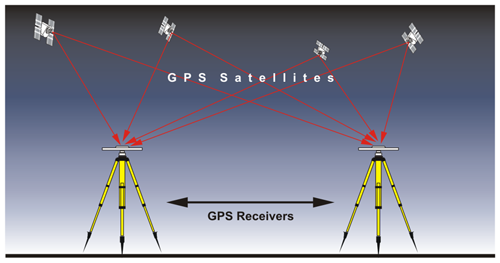
Receiver spacing and the atmospheric biases
There are other practical consequences of the atmospheric biases. As mentioned earlier, the character of the atmosphere is never homogeneous; therefore, the importance of atmospheric modeling increases as the distance between GPS receivers grows. Consider a signal traveling from one satellite to two receivers that are close together. That signal would be subjected to very similar atmospheric effects, and, therefore, atmospheric bias modeling would be less important to the accuracy of the measurement of the relative distance between them. But a signal traveling from the same satellite to two receivers that are far apart may pass through levels of atmosphere quite different from one another. In that case, atmospheric bias modeling would be more important. In other words, the importance of atmospheric correction increases as the differences in the atmosphere through which the GPS satellite signal must pass to reach the receivers increase. Such differences can generally be related to baseline length.